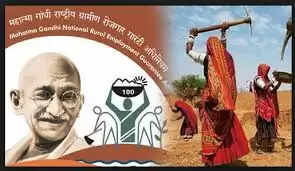Kendrapara's Unemployment Crisis: MGNREGA's Declining Impact on Local Jobs
Kendrapara Faces Rising Unemployment Amid MGNREGA Challenges

Kendrapara: The district is grappling with a significant rise in unemployment, primarily due to the ineffective implementation of the Mahatma Gandhi National Rural Employment Guarantee Act (MGNREGA). The lack of industrial development and mining activities has further aggravated the situation, compelling many young residents to seek employment opportunities elsewhere.
Recent data analysis indicates a troubling trend in the district's dependence on MGNREGA, with project completion rates experiencing a notable decline. Reports show that while 222,650 households have registered for job cards, many are left disillusioned. In the financial year 2024–25, only 73 families managed to secure the promised 100 days of work.
The effectiveness of the scheme has sharply diminished, with project completion rates plummeting from 86.38% in the 2022–23 fiscal year to just 49.74% in 2023–24. By the end of the last financial year, a mere 11.79% of projects had been completed.
In 2024, only 4,301 projects were launched, out of which only 507 were finished. Currently, there are 54,752 projects pending, including 25,867 from previous years and 28,885 awaiting approval. Local officials believe that addressing these projects could help reduce migration by creating job opportunities and fostering regional development.
According to a state government economic and social survey, social worker Banambar Sahu notes that Kendrapara ranks 26th in the state for economic development. He highlights that essential services such as roads, drinking water, electricity, education, and healthcare are still lacking in many areas. Despite having a wealth of human resources, unemployment remains a critical issue.
While MGNREGA was designed to tackle these challenges, local officials and representatives appear to lack motivation for the initiative. Sahu claims that instead of facilitating worker participation, there are allegations of obstruction, worsening the migration crisis.
Local intellectual Prashant Kumar Nayak emphasizes that funds from MGNREGA are directed towards various projects, including Anganwadi centers, rural infrastructure, flood control, water conservation, and improving drought-prone areas. He believes that completing these initiatives could significantly address the district's developmental hurdles.
However, the slow pace of project execution and the inability to create job opportunities continue to exacerbate the migration issue.
District Council Chief Development Officer Ajambar Mohanty asserts that not all data from the previous financial year has been compiled, claiming that many projects have been successfully completed.
